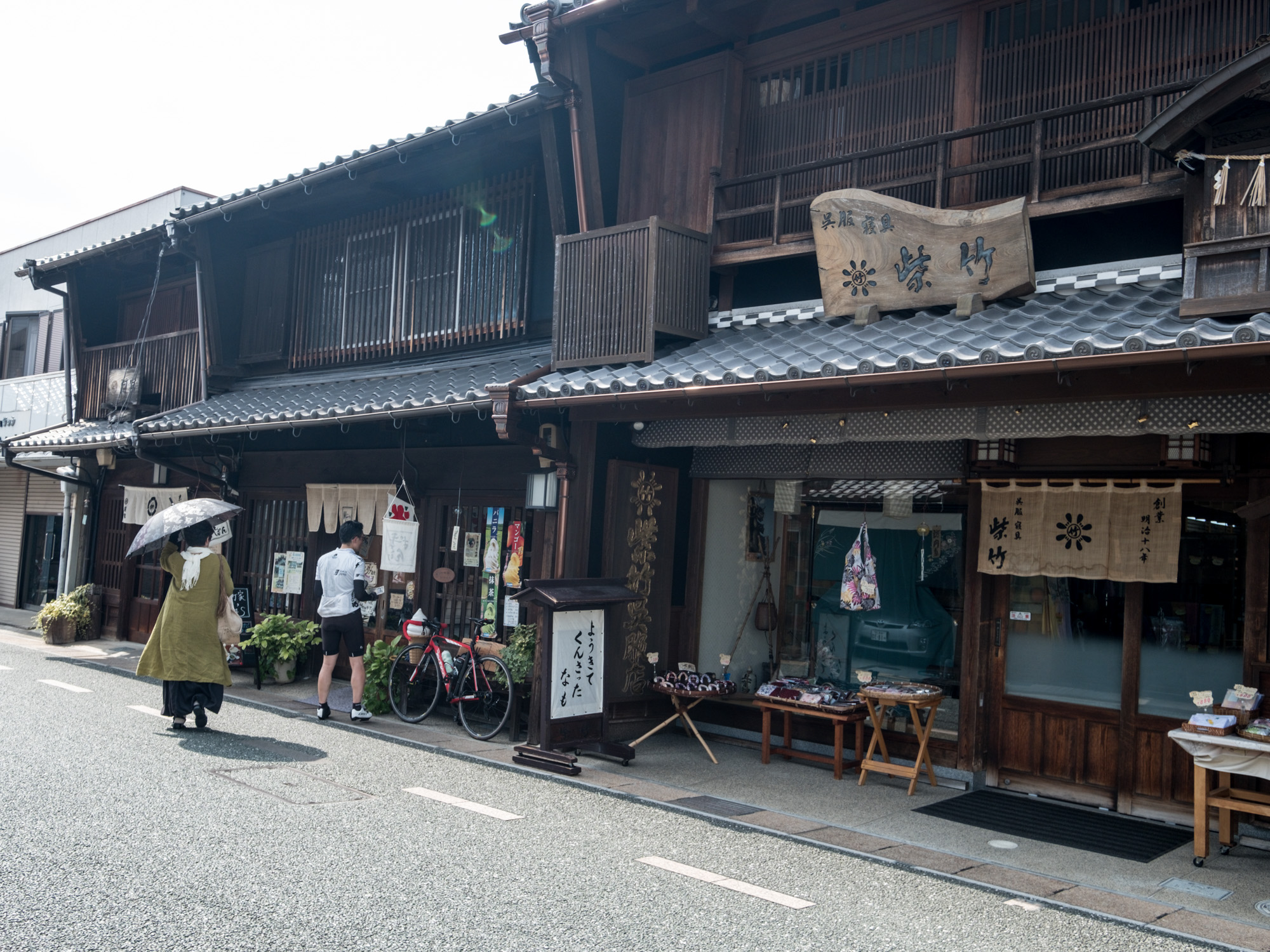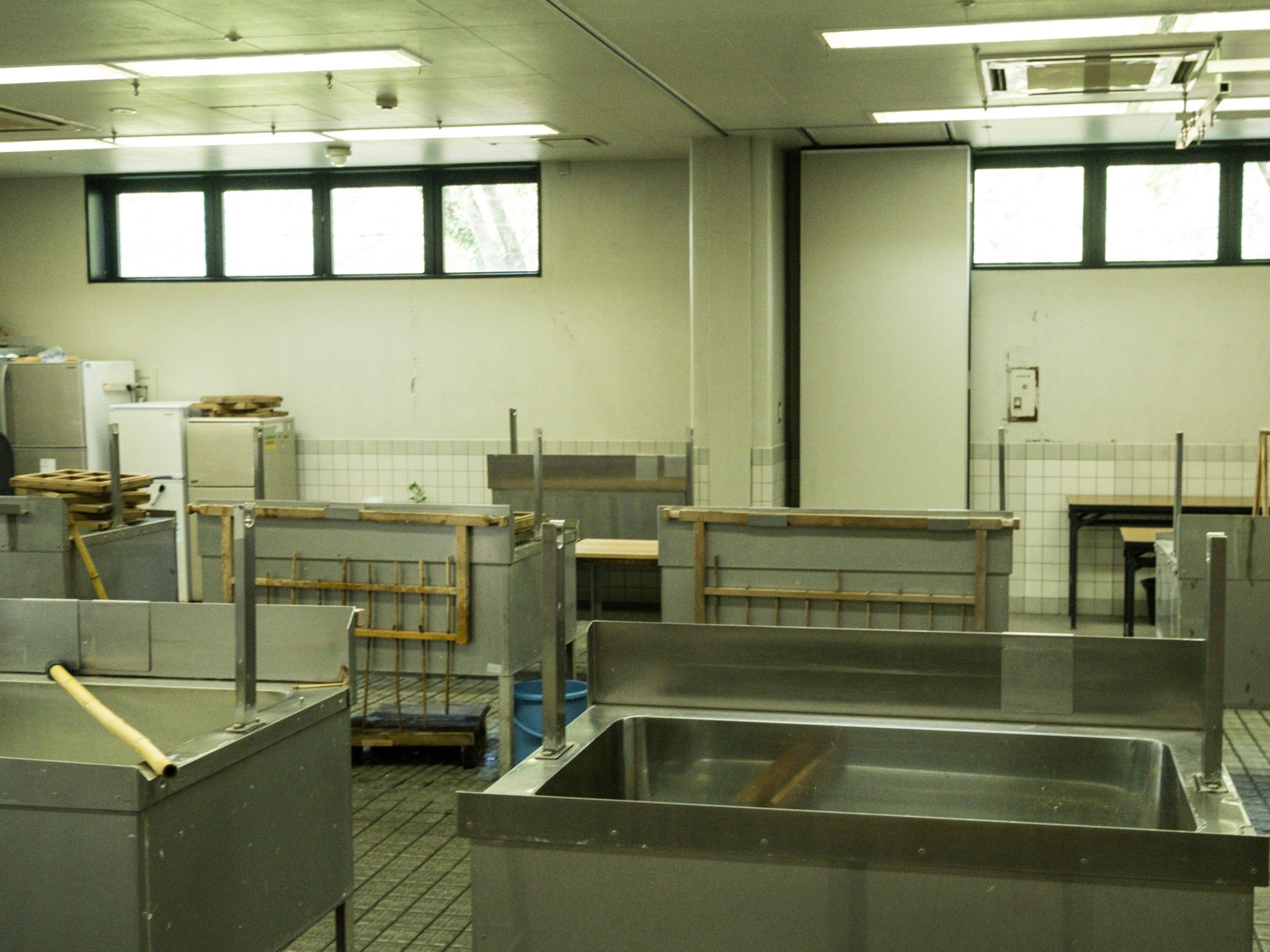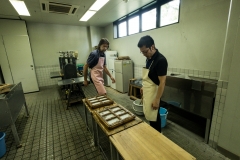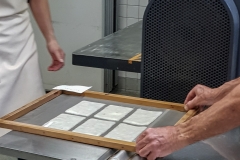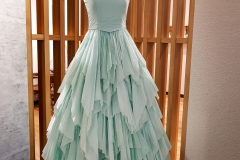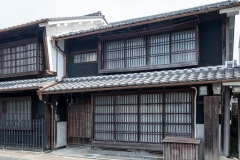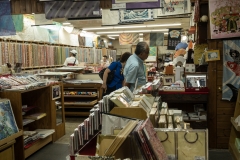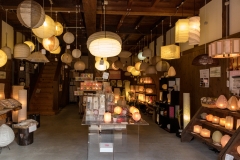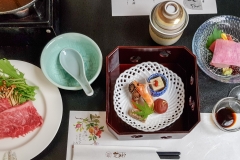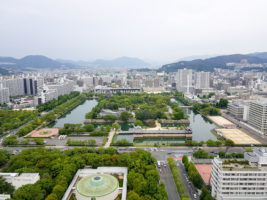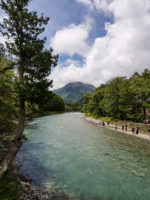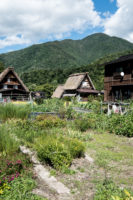Mino in Gifu is famous for traditional handmade paper and has an excellent museum known as the Mino Washi Traditional Paper Museum – (Washi being the Japanese word for paper.) – and we actually remember to check the open days so as to avoid the notorious Monday closing or Tuesday after a holiday in Japan.
Mino is one of the last towns in Japan that still has a traditional handmade paper industry and it is known for its fine quality and durability.
‘The robust Mino washi paper is made using a traditional technique called nagashizuki. A wooden box called a sukifune is immersed in a tank of water, and the washi paper is finished to a uniform thickness while being rocked back and forth, right and left. This intertwines the fibers of Mino washi paper in a complex fashion, imparting resistance to ripping in both horizontal and vertical directions. About ten percent of all Mino washi paper is the premium Hon-minoshi, which was designated as a Japanese national intangible cultural heritage in 1969, and was then registered by UNESCO as an intangible cultural heritage in 2014. These techniques have been handed down as a traditional craft that has gained world recognition.’
The museum building is spacious and modern and we find that there are some classes in papermaking on the ground floor next to the shop – quite a spacious studio where you can make postcards or paper sheets or can do a day course if you book earlier. We throw caution to the wind and enrol in the postcard course.
Once kitted in an apron we are taken to the large stainless steel sinks full of suspended paper pulp – This could be kozo, mitsumata or gampi pulp. English translation is in short supply and everyone smiles a lot. After a small stir of the pulp we have a demonstration by our tutor of how to fill the six postcard slots in our mould and deckle by dipping in and rocking back and forth in the pulp to get the correct thickness and then – it is our turn! Moulds filled it is on to the decorating of either coloured cutouts or mulberry leaves – I choose the leaves and artistically arrange them on my card – then we have to pour more pulp to embed the leaves.
Next we remove the deckle and slowly pass our moulds over an inverted vacuum that sucks the liquid and reduces the thickness. Now it’s off to the drying room where there are stainless steel heated walls and we stick our cards here to dry with our name importantly placed above our works of art. We are told to come back in an hour (I think.)
Time to explore the museum – it has a wonderful comprehensive display of the history and process of papermaking with old relics and tools – unfortunately no photos allowed, but highly recommended and very informative.
There is a contemporary display of all things paper and it is quite amazing to see dresses and paper cotton along with artworks and some very beautiful paper. It challenges your perception of paper as you know it.
There is another floor with models of cameras, cars, animals all made of paper it turns out – I would not have guessed as it looks so realistic.
Time to pick up our artworks and of course who can resist choosing some of the beautiful paper products from the shop. (I’m sure they will squeeze into the suitcase!)
There is also a cafe and we enjoy some lunch before taking up the suggestion to explore the old part of the city known as Udatsu which is in the style of the early Edo period (1603-1868). ‘An urban area known as “Udatsu Townscape” was designated as an important traditional building group conservation area by the government on May 13, 1999.’
The day is extremely hot, 36 degrees Celsius and not a whisper of breeze so it is of no surprise that the streets are quiet. The houses are charming brown wooden buildings with Udatsu roofs. There are many Washi shops – the choice of paper and the amount of treasures they stock is astounding (my suitcase is calling) and there are Washi art galleries and a Saki museum.
Our last call is a lantern shop and I can only fit a very small piece in my suitcase but the shop looks amazing. So much choice. We learn that there is the Mino-Washi “Akari” Exhibition in October and it is reputed to be a fantastic vision with the Udatsu tradition of rows of buildings lined with Paper lanterns.
Time to leave and we drive to Nakatsugawa to enjoy some respite staying hotel Hotel Hanasarasa with a real bed, onsen and a swimming pool. The evening meal amazing food – we are given our meal time and are accommodated in a large dining hall (one of many) and the same women who serve dinner as look after the rooms. They work hard but seem very happy.
The Onsen in the basement accommodates women on one side and men on the other. There is an outdoor spa and another hot spa inside with a cold tub. There is an etiquette – no shoes, strip off and bring only your small body towel held up in front for modesty – then a thorough scrubbing and shower with beautiful smelling body soap – then on to the spa where you need to put the towel on your head. Once finished, back to the shower that has shampoo and conditioner and then a brisk dry off. There is a row of sinks with hairdryers, hairbrushes and all types of moisturisers and face cleansers – very impressive!
A water recreation facility is next door – with an Onsen (but with chlorinated water), a pool, water slide and tube water stream also a maze of spas which is quite fun – every place has the jet at a different level so you can choose where to massage.
We enjoy a day of lounging about indoors while the rain continues outside.
